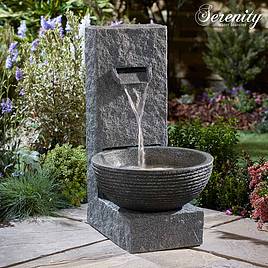Wisteria FAQs
Create your own Insta-worthy vista with wisteria. The trick to getting cascades of scented flowers from your vine is getting the pruning just right twice a year in February and August. Wisteria sinensis is typically a strong, vigorous grower and flowers before leaves develop in spring making an eye-catching display. These varieties twine up their plant supports in an anti-clockwise direction. Wisteria floribunda varieties like the mauve ‘Rosea’ or white ‘Longissima Alba (Shiro Noda)’ are notable for their extra long flower clusters and slightly less vigorous nature, both qualities that make them a great choice for growing up a building or against a warm standing wall. Make sure you install a strong trellis to support any wisteria you choose.
When To Plant wisteria plants
The best time to plant your container grown wisteria is between autumn and spring. Avoid planting your wisteria when the ground is frozen, waiting instead until the frosts end in spring and before they start up again in late autumn. Choose a warm, sunny spot to grow your wisteria. A south facing wall or sheltered trellis is ideal.
How To Plant wisteria plants
Dig over the soil to loosen it up. Dig a planting hole twice as wide as the container your wisteria arrives in to encourage lateral roots to grow and anchor your vine as it climbs. Sprinkle a handful of fish blood and bone fertiliser into the planting hole, mixing in with a trowel. Place your wisteria into the planting hole, ensuring that the juncture between root and stem is flush with the soil surface and backfill with the removed soil. Give your wisteria a good watering after planting to settle the soil around the roots.
At the start of the growth season in spring, give your wisteria plants a welcome boost with a liquid feed. If you want to keep your wisteria as a patio standard, choose a large container and make sure you provide plenty of nutrients. Mix a granular, slow release feed into the compost when you plant, and feed your standard every spring with a liquid fertiliser.
Does wisteria come back every year?
Enjoy flowers from your wisteria plant every spring. It’s a woody perennial which means the leaves die back in winter leaving the woody stems bare until flowering or producing leaves in April or May. You might enjoy a second flush of flowers from your vine in August if you’re lucky. Healthy vines can live for over 50 years so you can expect years of flowering from your wisteria plant.


